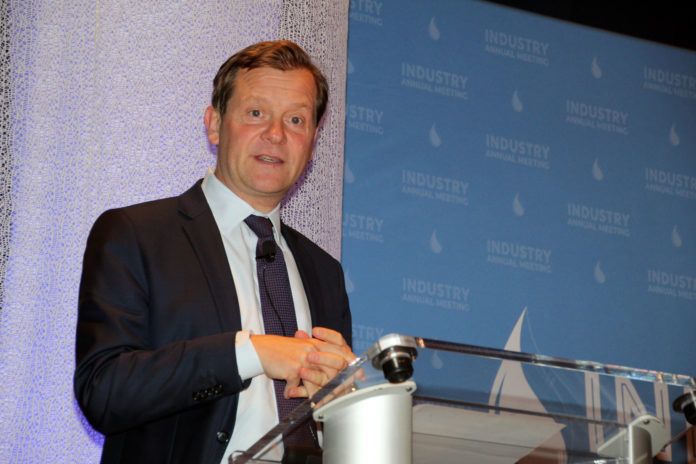Current market conditions aside, the president of ExxonMobil Fuels & Lubricants remains bullish about fossil fuels and expects demand for oil and gas to grow 8% and 6%, respectively, over the next 20 years.
Executive Bryan Milton spoke March 5 during a joint meeting of the Louisiana Mid-Continent Oil and Gas Association and Louisiana Oil & Gas Association in Lake Charles.
In his role, Milton oversees ExxonMobil’s downstream and midstream operations. “Even with changes coming out of the Paris Climate Agreement, there will be huge demand growth for oil and gas,” Milton adds. “If you want to quantify that, that’s $21 trillion of investment needed by 2040.”
The Gulf Coast stands to reap much of that investment, given the volume of oil and gas coming out of the unconventional shale plays of the Permian Basin, Haynesville and elsewhere. “In the last 10 to 15 years, the transformational development of unconventional oil and gas has totally changed the operational and performance capabilities of the U.S. market,” he says.
Speaking about the future of liquefied natural gas, Shell U.S. LNG President Frederic Phipps says the long-term demand remains strong—despite recent trepidation over the coronavirus—as gas continues to be the fuel of choice for cleaner energy solutions. Shell and Energy Transfer have partnered to build Lake Charles LNG, although the companies recently delayed the project to 2025.
Despite the delay, Phipps says the record supply of domestic natural gas has buoyed LNG prospects locally. “A growing population and rising living standards will continue to drive the demand for energy with lower emissions.”
Also participating on the LNG panel, G2 Net-Zero LNG Chairman Chas Roemer of Baton Rouge announced plans to build the first “net zero” plant in the state. Working in partnership with global energy innovators Siemens Energy Inc., 8 Rivers/NET Power and EJM Associates LLC, G2 plans to build liquefaction trains and a shipping terminal on 1,266 acres along the Calcasieu Ship Channel, three miles north of the Gulf of Mexico.

“We plan to achieve zero emissions from the wellhead to the back of our facility,” Roemer says. “It’s technologically possible and it can be profitable. I can produce LNG at a per unit cost below most of my competitors. Every company in the world is talking about being net zero by 2050—I can be there in 2027.”
Also speaking at the event, LOGA President Gifford Briggs updated attendees on an upcoming bill by Senator Bob Hensgens (R-Gueydan) that will seek to curtail the proliferation of coastal lawsuits. “We’re not asking for a get-out-of-jail-free card,” Briggs says. “The issue that we have right now is that we’re effectively giving veto authority over the development of minerals, LNG projects and anything else that the local governments decide they don’t like.”
Gloria Moncada, refinery manager at ExxonMobil Baton Rouge and LMOGA chairperson, says the event marked the first joint annual meeting of LMOGA and LOGA, and created “a tremendous opportunity to get the oil and gas industry together to speak and listen as one entity, as one voice.” Numerous breakout sessions were also on tap, with topics ranging from social media to pipelines to cybersecurity. The meeting’s theme was “Innovation in Energy.”



